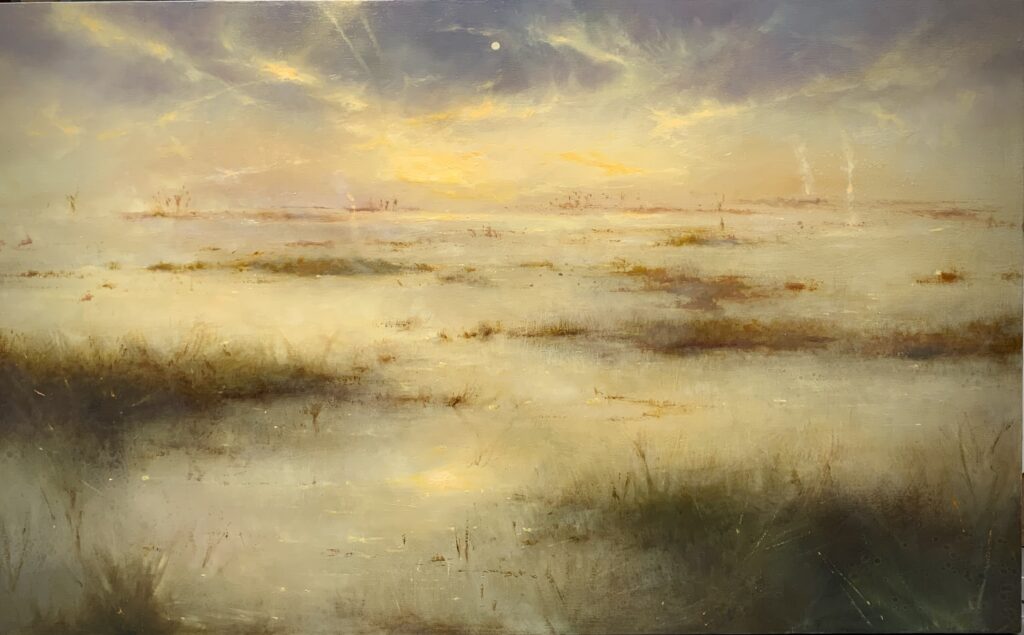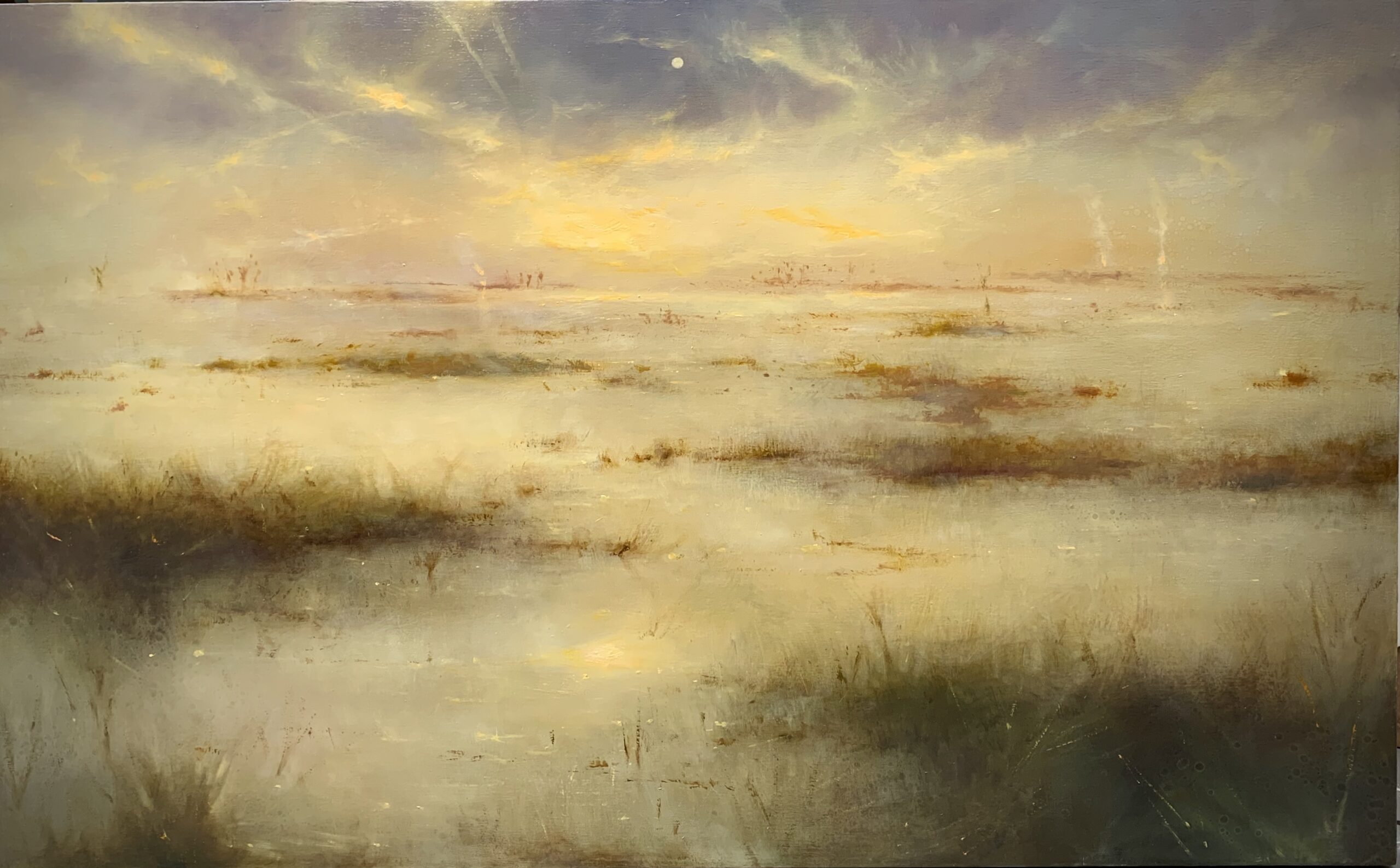Master of Light: Artist Richard Currier is known for his large and dramatic paintings


[Photo courtesy Fine Arts For Ocala]
Currier, a longtime participant in the event, is this year’s featured artist. He lives in Micco, on Florida’s Space Coast, where he built his own home and studio near the coastline. Inspired by nature, his recent “ocean” works include “Rising Tide” and “Far Horizon.” His website also showcases his landscapes, with “Twilight” and “Wetland,” and in figurative pieces such as “What God Wants” and “Levitate.” Many of those canvases span up to 6-feet by 7-feet. Currier also is noted for his still life works. He currently is represented by galleries in Fort Lauderdale, Jupiter, Fernandina Beach and New Orleans. His works have been exhibited throughout the United States and may be found in museums and collections here and abroad.
According to Maggie Weakley, FAFO’s administrative coordinator, Currier was selected as the featured artist for the 2020 festival, which was canceled because of the pandemic.
“Richard Currier has been a part of FAFO’s Ocala Arts Festival for over 10 years. He continuously wins awards during our festival and we can understand why he is FAFO’s featured artist this year,” Weakley said. “His work is captivating on all levels. If you are fortunate enough to stand in front of one of his bigger-than-life paintings, you will encounter the dramatic imagery that he contrasts using color, shape and depth. Richard is a master of capturing light. His recent paintings are of renditions of water; they are powerful, mysterious and rich with color and texture.”
To learn more about the artist, we did this Q&A with Currier.
When did you begin creating art?
“As far back as I can remember. There never was a time I was without drawing and painting supplies. My parents kept me supplied; a great babysitter I suppose. In high school I was in the art rooms or the gym. It was just very natural for me.”
What were the next steps?
“I chose Ringling School of Art because it was close and my teacher was an alumnus and encouraged me to go. From there, my course was set after being in such a creative environment with so many other talented students all wanting the same thing as I. There was no moving ahead with a traditional life. There was no playbook on how to proceed. This was before the internet age and cellphones, so my path was less defined and there were fewer outlets to promote yourself. You had to invent as you go, so to speak.”
What inspires you?
“There are some things that stand out to you and, at different times in your life, speak louder than others, so subject matter is something that evolves over time.
“Focusing on any one thing never really occurred, since there is so much to absorb when you are young. I read a quote by an author who said ‘Write what you know’ and that stuck with me to ‘paint what you know,’ so my life in Florida and the variety of environments to choose from had a great influence.
“I focused on different things at different times, but that is just listening to what is going on in your head and following the path. Sometimes you let the subject determine how it wants to be portrayed, whether it’s an atmospheric landscape or a more hyper-realistic face or still life.
“Still life paintings are a great way of grounding yourself in what is in front of you, directly observing and interpreting, a very intimate way of painting and has its own aesthetic.
“Landscapes are always painted from a recollection of what I have seen and remember how space felt at the time. The ‘selective eye’ remembers and the process of painting records the image on the canvas. I try to paint the space between the elements of the landscape rather than the ‘things’ in the landscape.
“Figurative paintings, primarily self-portraits, are a way to communicate through the confrontation of the gaze or lack thereof. With many of my self-portraits, the eyes are obscured and gaze through heavy shadows. They are a way of confronting the viewer as if asking an unanswerable question.”
Why such large canvases?
“I enjoy painting as large as the subject allows and is dictated by the need at the time. Paintings have ranged from one-foot square to 28 feet long.”
How do you achieve such detail?
“I work on a painting without regard to how long it may take, a few days to several months, and sometimes repaint later after one is ‘finished.’ The painting tells me when is complete and there is no point in forcing it if it’s not ready; it’s done when it’s done.”
What will you bring to Ocala?
“I will bring the most recent landscapes, ocean and self-portraits I have and that I can fit in my 10×10 foot space.”
Your advice for an aspiring artist?
“Art is a lifestyle and not an occupation, it chooses you. If you are an artist, you will be one regardless of outside influences and you must find your own way.
“The most important thing is having something to say that resonates with others. Art needs an audience and is incomplete without one.
“Too often success is defined by your ability to sell your work. I have been able to make my living as an artist but that has not always been the case, and I would have continued to paint regardless.”
To learn more, visit richardcurrierart.com
IF YOU GO
FAFO’s Ocala Arts Festival
10am-5pm, Saturday and Sunday, Oct. 23 and 24
Downtown Ocala
Features emerging artists, student art and performances, entertainment and food vendors.
Free admission
fafo.org





